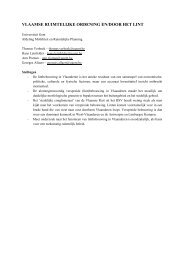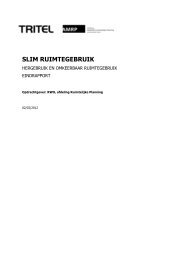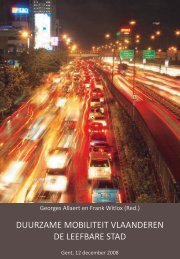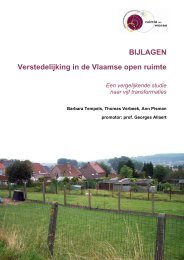third international conference on climate change
third international conference on climate change
third international conference on climate change
You also want an ePaper? Increase the reach of your titles
YUMPU automatically turns print PDFs into web optimized ePapers that Google loves.
Third Internati<strong>on</strong>al C<strong>on</strong>ference <strong>on</strong> Climate Change<br />
ABOUT THE CONFERENCE<br />
SCOPE AND CONCERNS<br />
The Internati<strong>on</strong>al C<strong>on</strong>ference <strong>on</strong> Climate Change: Impacts and Resp<strong>on</strong>ses, The Internati<strong>on</strong>al Journal of Climate Change:<br />
Impacts and Resp<strong>on</strong>ses, the On Climate Book Imprint and the Climate Change News Blog seek to create an<br />
interdisciplinary forum for discussi<strong>on</strong> of evidence of <strong>climate</strong> <strong>change</strong>, its causes, its ecosystemic impacts and its human<br />
impacts. The <str<strong>on</strong>g>c<strong>on</strong>ference</str<strong>on</strong>g> and journal also explore technological, policy, strategic and social resp<strong>on</strong>ses to <strong>climate</strong> <strong>change</strong>.<br />
CLIMATE CHANGE: THE EVIDENCE<br />
Climate is <strong>on</strong>e of the pivotal and dynamic forces in the natural history of the earth. Paleoclimatology provides us a l<strong>on</strong>g view<br />
of the ebb and flow of <strong>climate</strong> <strong>change</strong>, and a framework within which to interpret its ecosystemic c<strong>on</strong>sequences. In some<br />
times and places <strong>climate</strong> <strong>change</strong> explains processes of biodiversificati<strong>on</strong>, in other times and places a reducti<strong>on</strong> in<br />
biodiversity. In this l<strong>on</strong>g view, the history of life <strong>on</strong> earth is integrally related to climatalogical history.<br />
For the first time in natural history, the c<strong>on</strong>scious acti<strong>on</strong>s of <strong>on</strong>e creature—homo sapiens—have come to influence the<br />
course of earth‘s natural history, not just in local ecosystems, but <strong>on</strong> a planetary scale. This has been the case since<br />
humans began a process of populating the whole earth about <strong>on</strong>e hundred thousand years ago. Ecosystems were<br />
revoluti<strong>on</strong>ised by the sustained yield harvesting technologies of hunters and gathers, then the farming and animal<br />
husbandry technologies of self-sufficient peasantries, and most recently and most intensively by the global divisi<strong>on</strong> of labour<br />
of the industrial revoluti<strong>on</strong>, market-directed agriculture, the widespread clearing and harvesting of forests and the use of<br />
fossil fuels.<br />
It is now widely accepted that the most recent phase of human society has had an impact <strong>on</strong> the earth‘s <strong>climate</strong>.<br />
Greenhouse gases are heating up the earth. Ice that was permanent until recently, is rapidly melting. Sea levels are rising.<br />
Extreme weather events are occurring with greater frequency. Different regi<strong>on</strong>s are affected by these <strong>change</strong>s in different<br />
ways. However, a wide range of climatic <strong>change</strong>s can be attributed to patterns of human activity.<br />
Some of the <strong>change</strong>s we are experiencing today may be part of the course of natural history. Other <strong>change</strong>s, it seems<br />
certain, are the byproduct of human history. Key questi<strong>on</strong>s include: how do we measure and explain these <strong>change</strong>s? What<br />
are their immediate and likely future impacts? And what is to be d<strong>on</strong>e? These are questi<strong>on</strong>s of growing c<strong>on</strong>cern and<br />
practical urgency.<br />
ECOSYSTEMIC IMPACTS<br />
There is today the potential for disastrous impacts <strong>on</strong> ecosystems, communities, species and genetic diversity that could<br />
well lead to mass extincti<strong>on</strong>s in a relatively brief period. For instance, the special effects of glacial melt <strong>on</strong> mountain and<br />
riverine biodiversity and that of sea level rise <strong>on</strong> coastal and mangrove systems form a key c<strong>on</strong>cern for the future of<br />
biodiversity. The effect of <strong>climate</strong> <strong>change</strong> <strong>on</strong> coral reefs is already a major c<strong>on</strong>cern. Increased rainfall variability (in<br />
especially m<strong>on</strong>so<strong>on</strong> regi<strong>on</strong>s) could dry up or expand wetlands temporarily which in both scenarios would be disastrous.<br />
The most affected ecosystems will undoubtedly be situated in mountains, forests (especially evergreen types) grasslands,<br />
deserts and wetlands. Glacial, riverine and coastal ecosystems will also be altered. Knowledge currently available through<br />
Dynamic Global Vegetati<strong>on</strong> models simulating possible <strong>change</strong>s, clearly dem<strong>on</strong>strate that there will be further species loss.<br />
Many genetically species ill-adapted to envir<strong>on</strong>mental disturbances may vanish without a trace before scientists can catch<br />
the decline.<br />
The specific regi<strong>on</strong>al impacts <strong>on</strong> biomes and the vulnerabilities of different ecosystems across the globe need to be<br />
assessed. There are parallels between some areas, while there are subtle and complex dissimilarities between the <strong>change</strong>s<br />
that are occurring in different parts of the world. These include floods, drought, forest fires, hurricanes and other sporadic<br />
events that could devastate endemic species and threaten microhabitats.<br />
Some ecosystems could be highly vulnerable and will not be able to resp<strong>on</strong>d even to short term impacts such as natural<br />
disasters. In the presence of <strong>climate</strong> <strong>change</strong> these short term events could be even more cataclysmic. The possible impacts<br />
of invasive alien species that will spread due to climatic <strong>change</strong> are very little understood and could be devastating.<br />
The possibility of ‗ecological surprises‘ in sensitive areas also needs to be addressed. ‗Extreme events‘ could be especially<br />
damaging. There is thus a great need for scientists and practiti<strong>on</strong>ers to be brought <strong>on</strong> a comm<strong>on</strong> platform that will at least<br />
reduce the ill effects <strong>on</strong> species ecosystems and protected areas.<br />
The C<strong>on</strong>ference, Journal, Book Imprint and News Blog will share <str<strong>on</strong>g>internati<strong>on</strong>al</str<strong>on</strong>g> research based <strong>on</strong> local experiences, so that<br />
mitigati<strong>on</strong> and adaptati<strong>on</strong> to <strong>climate</strong> <strong>change</strong> can be understood by scientists, policymakers and practiti<strong>on</strong>ers c<strong>on</strong>cerned with<br />
the management of different ecosystems.<br />
6












